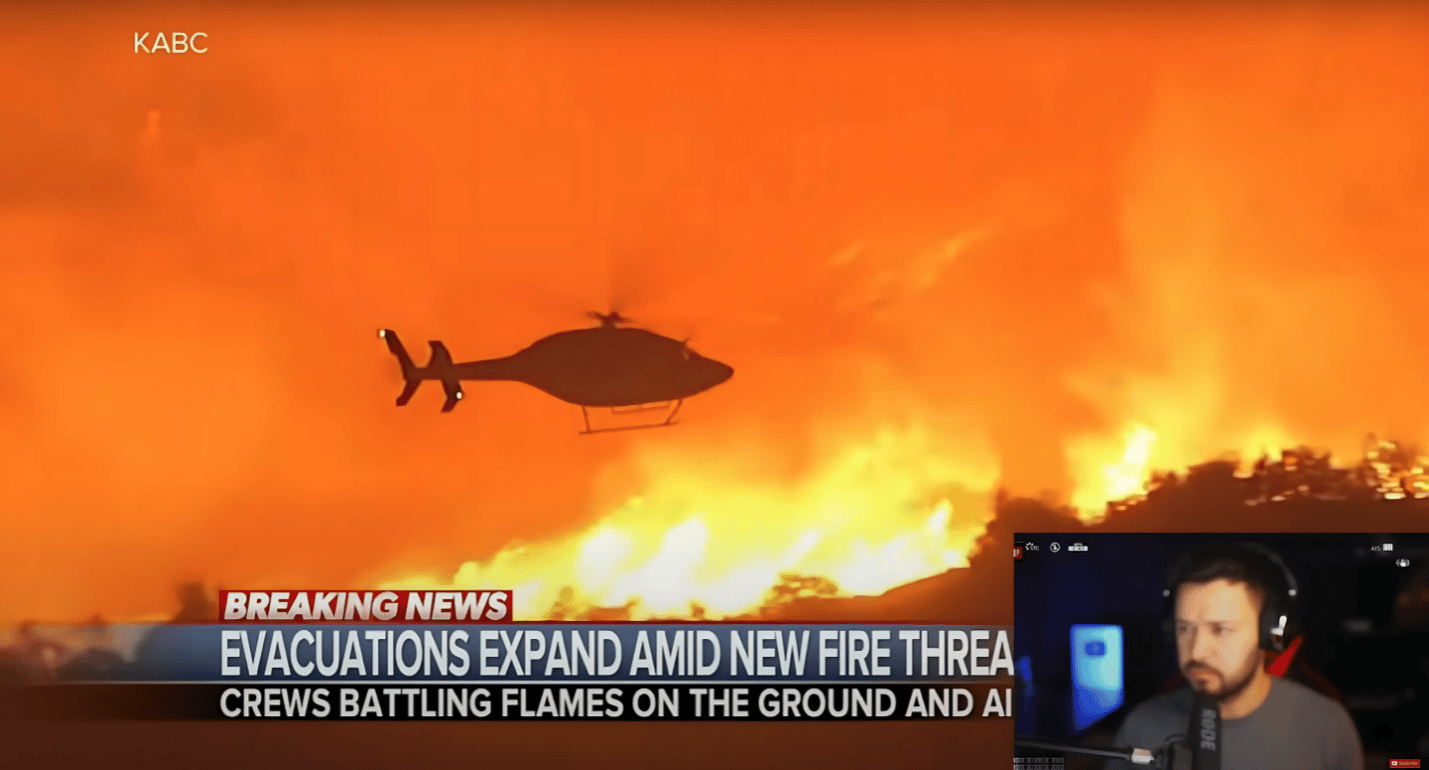The Southern California wildfire season continues to devastate communities, with the latest outbreaks causing unprecedented destruction and presenting new challenges for residents and first responders. From dangerous “fire tornadoes” to growing evacuation orders, the situation in Los Angeles County is escalating, leaving a trail of destruction and uncertainty in its wake.
The Wildfires at a Glance
Multiple fires are currently raging across the region:
- Palisades Fire: This fire has burned over 23,600 acres and is only 11% contained. It has destroyed thousands of homes and businesses, displacing residents from affluent areas like Brentwood and Pacific Palisades.
- Eaton Fire: Spanning more than 14,000 acres, this fire is 15% contained and has claimed eight lives. It has left several neighborhoods at risk of further damage.
- Manville Canyon: Firefighters are battling intense flare-ups in this area, where strong winds and dry conditions make containment efforts even more difficult.
As of now, over 16 people have tragically lost their lives, with at least 13 more reported missing. Officials are using grid searches and cadaver dogs to locate individuals in the hardest-hit areas, and rescue efforts continue to face extreme conditions.
Fire Tornadoes and Unprecedented Threats
Among the most shocking developments has been the emergence of “fire tornadoes” caused by the intense heat and high winds. These swirling columns of flame have added a dangerous and unpredictable element to the firefighting efforts, as seen in footage from Pacific Palisades.
Meteorologists have warned that high wind conditions, expected to persist through mid-week, are fueling the spread of embers, making containment increasingly difficult. A Red Flag Warning remains in effect for much of Southern California, with gusts of up to 50 mph predicted in areas like Santa Clarita and the Inland Empire.
The Human Toll and Community Impact
The fires have displaced thousands of residents, many of whom are struggling with uncertainty and grief. Stories of courage and loss have emerged, including that of Alec Gellis, who fought valiantly to save his girlfriend’s home, only to be forced to leave as flames overtook the property.
Air quality across Los Angeles has plummeted, with smoke and particulate matter spreading hundreds of miles, raising serious health concerns. Medical experts warn of long-term risks to lung and heart health, especially for children and those with preexisting conditions.
First Responders Fight Against the Odds
Firefighters are working tirelessly in grueling conditions, with some pulling 40-hour shifts to combat the flames. Crews from across the U.S., Mexico, and Canada have joined forces to aid in the efforts, using helicopters, flame retardants, and ground support to battle the blazes.
Despite these efforts, resource shortages remain a critical issue. Local officials have acknowledged that water supply systems, including fire hydrants, have been overwhelmed in certain areas, sparking debates about the region’s preparedness for such emergencies.
Leadership and Accountability
California Governor Gavin Newsom has doubled the National Guard presence to over 1,600 personnel and mobilized additional resources. However, the crisis has reignited criticism of state and local leadership, with questions about mismanagement of firefighting resources and inadequate infrastructure investment dominating public discourse.
Former President Donald Trump has weighed in, calling for accountability and criticizing leadership for failing to prepare for predictable wildfire conditions exacerbated by high winds and dry vegetation.
A Call for Resilience and Action
As the fires continue to burn, communities are banding together to support those in need. Evacuation centers and aid organizations are working to provide shelter, food, and resources to displaced families. However, the road to recovery will be long, with officials warning that containment efforts could take weeks or longer.
The 2025 wildfire season has underscored the urgent need for better fire prevention strategies, infrastructure improvements, and climate adaptation measures. As residents and first responders work to save lives and homes, the resilience of Californians remains a beacon of hope amid the devastation.
Stay tuned for updates as we continue to monitor this evolving crisis.
